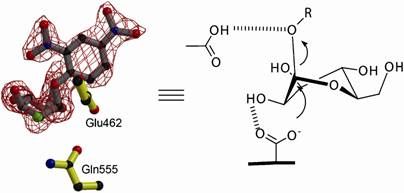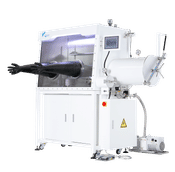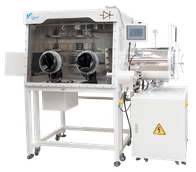Saltigo focuses on palladium-catalyzed cross-coupling reactions
Nobel Prize-winning chemistry in industrial use
Advertisement
Palladium-catalyzed Cross-Coupling reactions have become an important cornerstone of modern organic synthesis chemistry. They have made a wide variety of active pharmaceutical ingredients, natural substances and other complex organic molecules economically accessible. The award of this year's Nobel Prize for Chemistry to Richard F. Heck from the United States and Ei-ichi Negishi and Akira Suzuki from Japan acknowledges this. Yet these reactions have long outgrown the research laboratory. For Saltigo GmbH catalyzed cross-couplings are an integral part of its established technology portfolio. The Heck and Suzuki-type cross-coupling reactions especially have been in Saltigo's standard repertoire for many years. "The Heck Reaction and other cross-coupling reactions have received a strong boost in the last few years as new catalyst systems have made it possible to also use inexpensive, readily available aryl chlorides or phenol derivatives as co-reactants under relatively mild conditions," explained Dr. Björn Schlummer, chemicals Process Manager in Saltigo's Pharma business line. The Heck coupling reaction of aryl diazonium salts with unsaturated carbonyl compounds has also proved highly successful. It is a key step, for example, in the multi-stage synthesis of indanones. This reaction is noted for not requiring any halogen-containing starting products, merely diazonium salts, which can be accessed easily and economically in two steps from nitroaromatics. Their safe handling is one of Saltigo's core competencies in connection with so-called "challenging reagents and reactions". Saltigo nowadays receives dozens of customer inquiries every year about catalytic cross-coupling reactions – and the tendency is definitely on the up. "Before these reactions meet our expectations as regards selectivity and yield on an industrial scale too, a large amount of optimization work is frequently necessary," said Schlummer. To begin with, catalytic processes make very high demands on the purity of the raw materials and auxiliaries used, including the solvents. In addition, many catalyst systems – or the ligands used in them – require special handling because of their sensitivity to oxygen. On an industrial scale, that is not exactly trivial. "Working under protective gas or producing catalysts in a glove box has now become routine," added Schlummer. Last but not least, the process engineering side of the coupling reactions can be a major challenge when homogeneous mixing of heterogeneous reaction systems has to be ensured. An essential prerequisite for the successful industrial application of cross-coupling reactions is the optimization of the catalyst systems, especially the ligands used in them. It is then possible, for example, to largely repress undesirable coupling reactions between co-reactants of a similar type – so-called homo-coupling – in favor of cross-coupling reactions. Saltigo can call on many years of experience with homogeneous catalytic processes. The phosphane ligands used in the Buchwald-Hartwig carbon-nitrogen coupling reactions in particular, which have been thoroughly investigated at Saltigo, are also suitable for Suzuki reactions for carbon-carbon linkage. Saltigo itself produces many of the boronic acids needed in these Suzuki reactions from pre-products that stem from the aromatics network that LANXESS has successfully operated for several decades. Consequences of this efficient backward integration include greater flexibility in the execution of such syntheses plus economic benefits. Even if the transition metal-catalyzed reaction step was successful, it is essential in industrial synthesis to comply with further requirements, especially in the production of active pharmaceutical ingredients (APIs). National and international directives on drug safety, for example, state that intermediate products and active ingredients may contain a maximum of just a few parts per million of palladium. The measures to separate off palladium during processing and purification of the products are therefore not taken solely to recover the expensive noble metal. From the many methods for reduction in the reaction products, Saltigo experts select the optimal process also in respect of CGMP requirements. In addition to the possibility of adsorbing the palladium on activated carbon, use can also be made, for example, of highly selective ion exchange resins produced by the LANXESS Ion Exchange Resins business unit. "A big advantage of many palladium-catalyzed coupling reactions is that their scale-up is relatively unproblematic once the reaction has reached industrial scale," said Schlummer. This is particularly attractive when, in the course of a synthesis project, the required volume continuously rises. This is perfectly normal in the development, clinical testing and marketing of active pharmaceutical ingredients. Whenever Saltigo is planning a synthesis, it will always look not only at modern catalytic processes but also at traditional synthesis routes, with which the company is equally experienced. "In this way we can be sure that, at the end of the day, we have found the optimal synthesis solution for the customer – an efficient, safe and reliable route that is also economically worthwhile. Palladium-catalyzed cross-coupling reactions from this year's Nobel Prize-winners have enriched our technology portfolio in the last few decades on a lasting basis," concluded Schlummer.
Other news from the department research and development
These products might interest you
Most read news
More news from our other portals
See the theme worlds for related content
Topic world Synthesis
Chemical synthesis is at the heart of modern chemistry and enables the targeted production of molecules with specific properties. By combining starting materials in defined reaction conditions, chemists can create a wide range of compounds, from simple molecules to complex active ingredients.

Topic world Synthesis
Chemical synthesis is at the heart of modern chemistry and enables the targeted production of molecules with specific properties. By combining starting materials in defined reaction conditions, chemists can create a wide range of compounds, from simple molecules to complex active ingredients.




























































